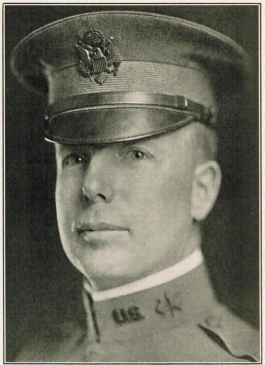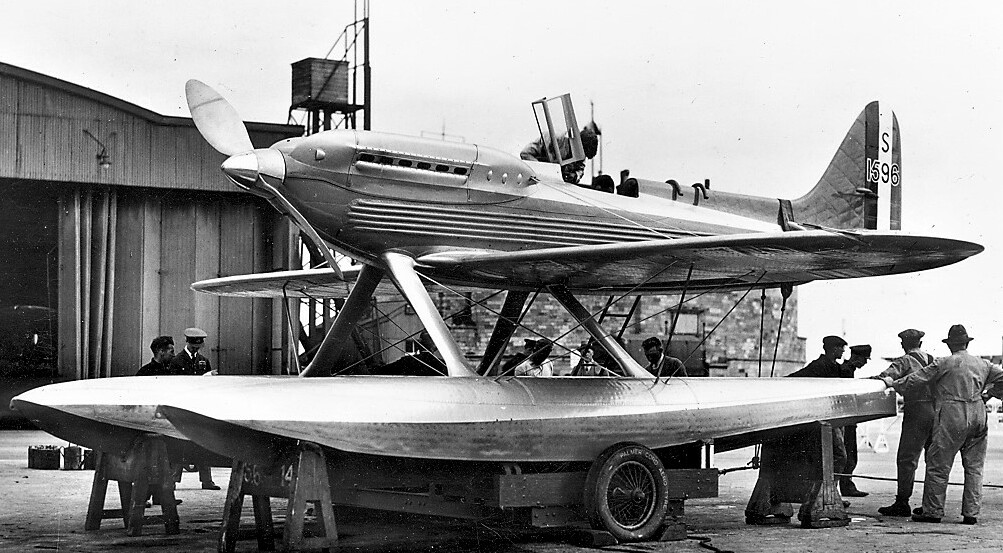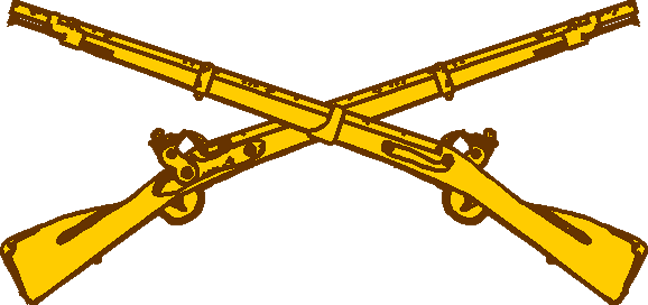|
Vernon L. Burge
Vernon Lee Burge (November 29, 1888 – September 6, 1971) was an aviation pioneer. He was the first American enlisted man to be certified as a military pilot. After ten years as an enlisted man, Burge was commissioned during World War I and served the next 25 years as an officer. Biography He was born on November 29, 1888. In the autumn of 1907, Private First Class Vernon Burge was assigned to Fort Myer, Virginia, to join the newly formed Aeronautical Division, U.S. Signal Corps under Captain Charles deForest Chandler. At that time, the Aeronautical Division was composed of only three officers, ten enlisted men and one female civilian clerk. There was to have been an eleventh enlisted man, but he deserted after learning of his assignment. At first, the unit trained in the military use of balloons. While Burge was stationed there in August 1909, the Wright Brothers brought to Fort Myer the first fixed-wing aircraft purchased by the U.S. Army, a variant of the Wright Model A t ... [...More Info...] [...Related Items...] OR: [Wikipedia] [Google] [Baidu] |
Aeronautical Division, U
Aeronautics is the science or art involved with the study, design, and manufacturing of air flight–capable machines, and the techniques of operating aircraft and rockets within the atmosphere. The British Royal Aeronautical Society identifies the aspects of "aeronautical Art, Science and Engineering" and "The profession of Aeronautics (which expression includes Astronautics)." While the term originally referred solely to ''operating'' the aircraft, it has since been expanded to include technology, business, and other aspects related to aircraft. The term "aviation" is sometimes used interchangeably with aeronautics, although "aeronautics" includes lighter-than-air craft such as airships, and includes ballistic vehicles while "aviation" technically does not. A significant part of aeronautical science is a branch of dynamics called aerodynamics, which deals with the motion of air and the way that it interacts with objects in motion, such as an aircraft. History Early ideas ... [...More Info...] [...Related Items...] OR: [Wikipedia] [Google] [Baidu] |
Charles DeForest Chandler
Colonel Charles deForest Chandler (December 24, 1878 – May 18, 1939) was an American military aviator, and the first head of the Aeronautical Division, U.S. Signal Corps that later became the United States Air Force. He was one of earliest aviators to show that a machine gun could be fired from an airplane. Biography He was born in Cleveland, Ohio, on Christmas Eve, December 24, 1878. He was commissioned as a 1st lieutenant in the Signal Corps during the Spanish–American War. He was discharged in 1899 but was re-commissioned in 1901. While in the rank of captain, he served as of the Aeronautical Division of the Signal Corps from August 1, 1907, to May 13, 1908, and also from June 20, 1911, to April 1, 1913. With the United States entering World War I in April 1917, he quickly rose from captain to temporary colonel in a period of only seven months. He commanded the balloon section of the American Expeditionary Forces during World War I. He was awarded the Distinguished S ... [...More Info...] [...Related Items...] OR: [Wikipedia] [Google] [Baidu] |
Float (nautical)
Floats (also called pontoons) are airtight hollow structures, similar to pressure vessels, designed to provide buoyancy in water. Their principal applications are in watercraft hulls, aircraft floats, floating pier, pontoon rhinos, pontoon causeways, and marine engineering applications such as salvage. During World War II the United States Navy Civil Engineer Corps developed a modular steel box (pontoon) for the Seabees to use. It was an industrial sized Lego system of pre-drilled pre-cut angle iron and steel plate that could be assembled anywhere for which they became famous. They used them to facilitate amphibious landings. With the pontoons Seabees assembled docks, causeways, and rhinos to whatever size needed. They allowed landings on Sicily where no one thought possible. They ferried Patton across the Rhine and put the Marines ashore on Okinawa. They would be used during the Korean War in the landing at Inchon in 1950 and again in Lebanon during the 1958 Leban ... [...More Info...] [...Related Items...] OR: [Wikipedia] [Google] [Baidu] |
Mechanician
A mechanician is an engineer or a scientist working in the field of mechanics, or in a related or sub-field: engineering or computational mechanics, applied mechanics, geomechanics, biomechanics, and mechanics of materials. Names other than mechanician have been used occasionally, such as mechaniker and mechanicist. The term mechanician is also used by the Irish Navy to refer to junior engine room ratings. In the United Kingdom, British Royal Navy, Chief Mechanicians and Mechanicians 1st Class were Chief Petty Officers, Mechanicians 2nd and 3rd Class were Petty Officers, Mechanicians 4th Class were Leading Ratings, and Mechanicians 5th Class were Able Ratings. The rate was only applied to certain technical specialists and no longer exists. In the New Zealand Post Office, which provided telephone service prior to the formation of Telecom New Zealand in 1987, "Mechanician" was a job classification for workers who serviced telephone exchange switching equipment. The term seems to hav ... [...More Info...] [...Related Items...] OR: [Wikipedia] [Google] [Baidu] |
Fort William McKinley
Fort Andres Bonifacio (formerly named Fort William McKinley) is the site of the national headquarters of the Philippine Army (Headquarters Philippine Army or HPA) located in Metro Manila, Philippines. It is located near the national headquarters of the Philippine Air Force (PAF). The camp is named after Andres Bonifacio, the revolutionary leader of the Katipunan during the Philippine Revolution. History American colonial era Fort William McKinley, now Fort Bonifacio, was established during the Philippine–American War in 1901. The land is situated south of the Pasig River, down to the creek Alabang, in Manila. It was declared a U.S. military reservation by U.S. Secretary of War Elihu Root, expropriating the land owned by Captain Juan Gonzales without compensation. This expropriation was later challenged by then President Ferdinand E. Marcos and the US agreed to compensate, through him, in trust deposits. In 1916, the 3rd Battalion of the 31st Infantry Regiment was fo ... [...More Info...] [...Related Items...] OR: [Wikipedia] [Google] [Baidu] |
Wright Model B
The Wright Model B was an early pusher biplane designed by the Wright brothers in the United States in 1910. It was the first of their designs to be built in quantity. Unlike the Model A, it featured a true elevator carried at the tail rather than at the front. It was the last Wright model to have an open-frame tail. The Model B was a dedicated two-seater with the pilot and a passenger sitting side by side on the leading edge of the lower wing. Besides their civil market, the Wrights were able to sell aircraft to the Aeronautical Division, U.S. Signal Corps (S.C. 3, 4, and 5) and to the United States Navy as hydroplanes (AH-4, -5-, and -6), in which services they were used as trainers. Furthermore, the Wrights were able to sell licenses to produce the aircraft domestically (to the Burgess Company and Curtis, which designated it Model F), as well as in Germany. The deal with Burgess was the first license-production of aircraft undertaken in the United States and most of t ... [...More Info...] [...Related Items...] OR: [Wikipedia] [Google] [Baidu] |
Corporal Vernon L Burge
Corporal is a military rank in use in some form by many militaries and by some police forces or other uniformed organizations. The word is derived from the medieval Italian phrase ("head of a body"). The rank is usually the lowest ranking non-commissioned officer. In some militaries, the rank of corporal nominally corresponds to commanding a section or squad of soldiers. By country Argentina NCOs in the Argentine Armed Forces are divided into junior and senior NCOs, with three and four ranks, respectively. The three junior ranks are called "corporal" (cabo) in both the Navy and the Air Force, while in the Army the third rank is called "sergeant" (sargento). National Gendarmerie and Coast Guard junior NCOs ranks are similar to those in the Army and Navy, respectively. Australia Corporal is the second lowest of the non-commissioned officer ranks in the Australian Army, falling between lance-corporal and sergeant. A corporal is usually appointed as a section commande ... [...More Info...] [...Related Items...] OR: [Wikipedia] [Google] [Baidu] |
Tricycle Landing Gear
Tricycle gear is a type of aircraft undercarriage, or ''landing gear'', arranged in a tricycle fashion. The tricycle arrangement has a single nose wheel in the front, and two or more main wheels slightly aft of the center of gravity. Tricycle gear aircraft are the easiest for takeoff, landing and taxiing, and consequently the configuration is the most widely used on aircraft.Crane, Dale: ''Dictionary of Aeronautical Terms, third edition'', page 524. Aviation Supplies & Academics, 1997. Aviation Publishers Co. Limited, ''From the Ground Up'', page 11 (27th revised edition) History Several early aircraft had primitive tricycle gear, notably very early Antoinette planes and the Curtiss Pushers of the pre-World War I Pioneer Era of aviation. Waldo Waterman's 1929 tailless '' Whatsit'' was one of the first to have a steerable nose wheel. In 1956, Cessna introduced sprung-steel tricycle landing gear on the Cessna 172. Their marketing department described this as "Land-O-Matic" t ... [...More Info...] [...Related Items...] OR: [Wikipedia] [Google] [Baidu] |
Benjamin Foulois
Benjamin Delahauf Foulois (December 9, 1879 – April 25, 1967) was a United States Army general who learned to fly the first military planes purchased from the Wright brothers. He became the first military aviator as an airship pilot, and achieved numerous other military aviation "firsts". He led strategic development of the Air Force in the United States. Early life Benjamin "Benny" Delahauf Foulois was born on December 9, 1879, in Washington, Connecticut, to a Franco-American pipe-fitter and a Boston-born nurse. Early military service At age 18, he used his older brother's birth certificate to enlist in the Army to support the Spanish–American War, but arrived in Puerto Rico just weeks before the armistice was signed. As an engineer, he fought off the rampant tropical diseases, and after five months, was shipped home and mustered out. On June 17, 1899, Foulois enlisted again, using his own name, as a private in the Regular Army and was assigned to the 19th Infantry, where ... [...More Info...] [...Related Items...] OR: [Wikipedia] [Google] [Baidu] |
Fort Sam Houston
Fort Sam Houston is a U.S. Army post in San Antonio, Texas. "Fort Sam Houston, TX • About Fort Sam Houston" (overview), US Army, 2007, webpageSH-Army. Known colloquially as "Fort Sam," it is named for the U.S. Senator from Texas, U.S. Representative from Tennessee, Tennessee and Texas governor, and first president of the Republic of Texas, Sam Houston. The installation's missions include serving as the command headquarters for the Fourth United States Army, United States Army North (formerly the Fifth United States Army), United States Army South, the Army Medical Command (MEDCOM) headquarters, the Army Medical Department (AMEDD) Center and School, the Fifth Recruiting Brigade, Navy Regional Recruiting, the San Antonio Military Entrance and Processing Station, and the Medical Education and Training Campus (METC). On October 1, 2010, Fort Sam Houston joined Lackland Air Force Base and Randolph Air Force Base to create Joint Base San Antonio, under Air Force administration. Ho ... [...More Info...] [...Related Items...] OR: [Wikipedia] [Google] [Baidu] |
Wright Model A
The Wright Model A was an early aircraft produced by the Wright Brothers in the United States beginning in 1906. It was a development of their Flyer III airplane of 1905. The Wrights built about seven Model As in their bicycle shop during the period 1906–1907 in which they did no flying. One of these was shipped to Le Havre in 1907 in order to demonstrate it to the French. The Model A had a engine and seating for two with a new control arrangement. Otherwise, it was identical to the 1905 airplane. The Model A was the first aircraft that they offered for sale, and the first aircraft design to enter serial production anywhere in the world. Apart from the seven machines the Wrights built themselves in 1906–1907, they sold licences for production in Europe with the largest number of Model As actually being produced in Germany by Flugmaschine Wright GmbH, which built about 60 examples. The 1909 Military Flyer was a one-of-a-kind Model A built by the Wright Brothers. With win ... [...More Info...] [...Related Items...] OR: [Wikipedia] [Google] [Baidu] |
Fixed-wing Aircraft
A fixed-wing aircraft is a heavier-than-air flying machine, such as an airplane, which is capable of flight using wings that generate lift caused by the aircraft's forward airspeed and the shape of the wings. Fixed-wing aircraft are distinct from rotary-wing aircraft (in which the wings form a rotor mounted on a spinning shaft or "mast"), and ornithopters (in which the wings flap in a manner similar to that of a bird). The wings of a fixed-wing aircraft are not necessarily rigid; kites, hang gliders, variable-sweep wing aircraft and airplanes that use wing morphing are all examples of fixed-wing aircraft. Gliding fixed-wing aircraft, including free-flying gliders of various kinds and tethered kites, can use moving air to gain altitude. Powered fixed-wing aircraft (airplanes) that gain forward thrust from an engine include powered paragliders, powered hang gliders and some ground effect vehicles. Most fixed-wing aircraft are flown by a pilot on board the craft, but some ar ... [...More Info...] [...Related Items...] OR: [Wikipedia] [Google] [Baidu] |



.jpg)





